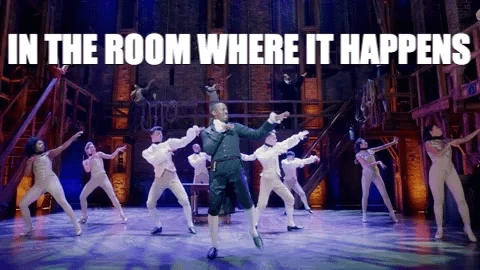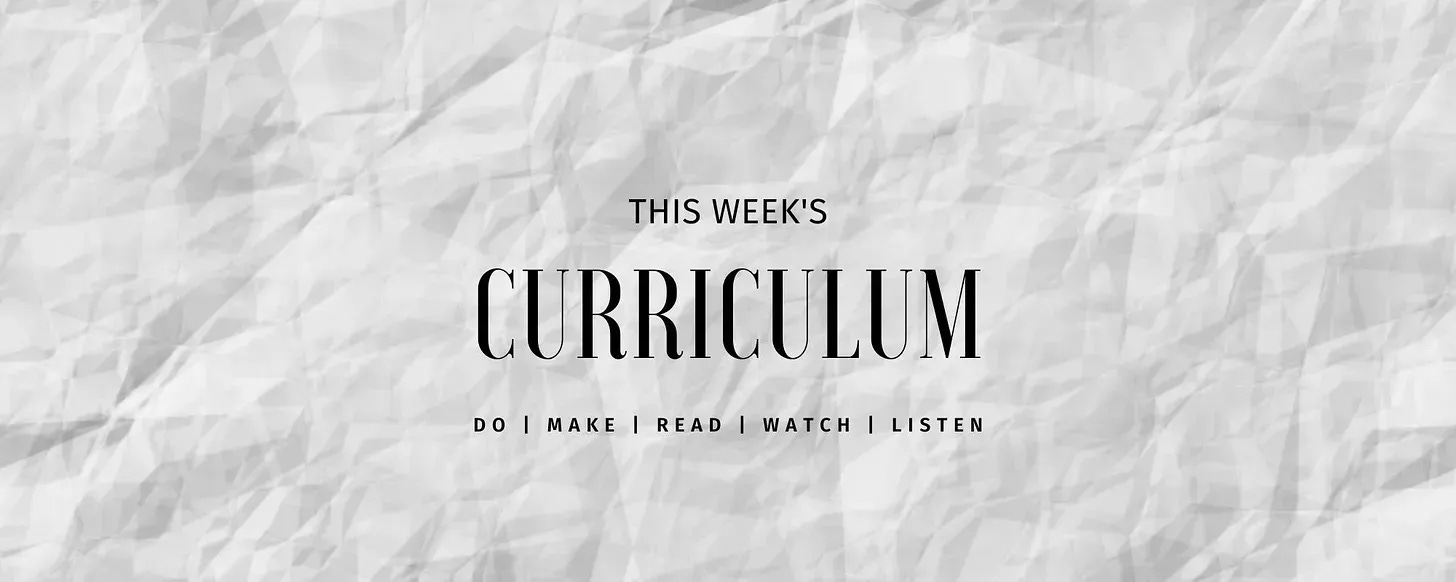When I was involved in the TEDxBrisbane world, we used to talk about “engineering impact”. I always loved this phrase, partly because I like any concept that reminds you that you have control, and do not need to sit around waiting for the chips to fall into place around you.
There was an entire team of people devoted to fostering these connections, which is lucky, because I was mostly thinking about the logistics of getting 500 people fed, toileted, engaging with sponsorship activations, and then back in their seats by a very, very specific time. (It was in many ways my dream job hah!)
Later, I contracted to a university’s career advisory team, specialising in entrepreneurship. In this role, I used to talk to my students about “engineering opportunities”, my riff on the TEDxBrisbane motto.
My idea is this: being in the right place at the right time doesn’t happen by accident.
It’s something you can make happen, and you will need to if you want to design an extraordinary life and career.
There are four key ways to engineer being in the right place at the right time:
Uncover hidden opportunities where you currently are
Request informational interviews with people you admire
Pitch your Unique Value Proposition to dream companies/clients
Experiment and build community on the side
Today I want to focus on informational interviews, an incredible tool for your discovery toolkit. If you’re in Archaeologist mode, this is a fantastic place to start.
How to Use Informational Interviews
Informational interviews are a goldmine for Project People exploring new paths. They provide insights into industries and roles you’re curious about, while opening doors to potential opportunities.
Here’s my step-by-step guide to the art of informational interviews.
Step 1: Identify People to Interview
Of course, start by brainstorming industries, roles, or businesses that intrigue you. Do you follow anyone whose career you feel slightly (or massively) envious of?
Use LinkedIn, Instagram, YouTube or even local groups to find people. Focus on people whose careers spark curiosity. Definitely ask your network for referrals. For example, “I’m exploring careers in UX design. I know you had some clients in that field – do you know anyone I could chat with?” Give them a couple of sentences of your bio to forward onto the the third person and give them a bit more context.
Note: if you ever have this request from someone, please always get a double opt-in before connecting two people. Both people should say yes before you pop them both into a thread.
Step 2: Be Clear On Your Ask
Reaching out can feel daunting, but keep your message simple and respectful of their time. Your goal is to make it easy for them to say yes and to be clear about your intentions: you’re seeking guidance, not a job offer or free counselling.
Here’s an example:
Subject: Quick chat about [industry/role]
Hi [Name],
I really admire your career in [specific field/role], and I’m currently exploring my own next steps in [specific field/role] because [make this sentence personal].
I wondered if you would have time to share your experience getting into [the industry/or something specific you want help with]. Would you be open to a quick 20-minute chat? I can work around your schedule and am happy to meet in person, over the phone, or via Zoom.
Thank you so much for considering this, as I know your time is precious!
Kind regards,
[Your Name]
Step 3: Prepare for the Interview
Before you even reach out, you should have researched the person’s background and role beforehand. Try not to ask questions you could find easily online.
Prepare a list of thoughtful questions tailored to them, such as:
What does a typical day look like for you?
What sort of people do you work with and in what capacities?
How did you get started in this industry?
Are there specific skills or experiences you’d recommend for someone entering this field?
You may also find that someone doesn’t want to hook up a phone call, but is happy to answer your question over email. In this case, send no more than three questions for them to answer in their own time – this will make it much easier on them, instead of answering 20 questions from someone they don’t know.
Step 4: Conduct the Interview
Be punctual and professional. Start by thanking them for their time. As they share, actively listen and take notes. Show genuine curiosity—this is your chance to absorb wisdom and spark ideas.
Be prepared to share a bit about yourself, but keep it concise and relevant. This is about learning from them, not pitching yourself.
Towards the end, you could ask if there’s anyone else relevant they’d recommend you speak to, and if you can mention their name when reaching out. Most people are happy to connect you further if they think you’re genuinely curious, not just looking for a quick and easy job offer.
Step 5: Follow Up and Stay Connected
After the interview, send a thank-you note within 24 hours. Mention specific insights you found helpful, and let them know how much you appreciate their time.
Example:
Thank you for taking the time to share your experiences in [industry/role]. I especially loved learning about [specific takeaway]. It’s given me so much clarity on where I need to go from here. I’ll be sure to follow up on [their suggestion, if applicable].
To maintain the relationship, connect on LinkedIn or Instagram (depending on your field) with a personalised note. Occasionally touch base with updates or congratulations on their achievements, and keep them in your sphere because generous people like this make the world go round.
Final Thoughts
Informational interviews are not just a tool for learning—they’re a way to build relationships and uncover opportunities. By approaching them with curiosity and respect, you can expand your understanding of what’s possible and start shaping a life that lights you up.
Now, go forth and start those conversations! You never know where they’ll lead.
(The song from Hamilton is now going to be in my head all week.)
This Week’s Life Curriculum
Bring in your extraordinary life, inch by inch, day by day.
DO | host a simple brunch with friends instead of another evening of drinks. Make some granola parfaits, blueberry muffins and put out a loaf of fresh sourdough with jams. Follow with a stroll around the neighbourhood or local park.
MAKE | this superfood salmon and sweet potato salad on an evening when you really just cannot have one more arancini ball. Why is Australia so obsessed with serving reheated arancini balls at Christmas parties?! Why?! (Sorry, the cocktail party fatigue may have set in a bit earlier than usual this year! But my strong opinions about arancini are not new.)
READ | I am currently reading James Baldwin’s utterly devastating Giovanni’s Room for book club, but one of my favourite (lighter) summer reads is Provence, 1970, the
critically acclaimed story of dramatic friendships and rivalries, when Fisher, Julia Child, James Beard, and other culinary icons gathered in Provence in 1970 and debated (and unwittingly shaped) the future of food in America.
Choose as you will!







This was such a great read! Love it.